Learn more about the history of the Pillars of Hercules in Gibraltar, the controversy on the southern pillar, and how to visit the Pillars of Hercules.
By Nick Nutter | Updated 7 Aug 2023 | Gibraltar | Places To Go |
Login to add to YOUR Favourites or Read Later
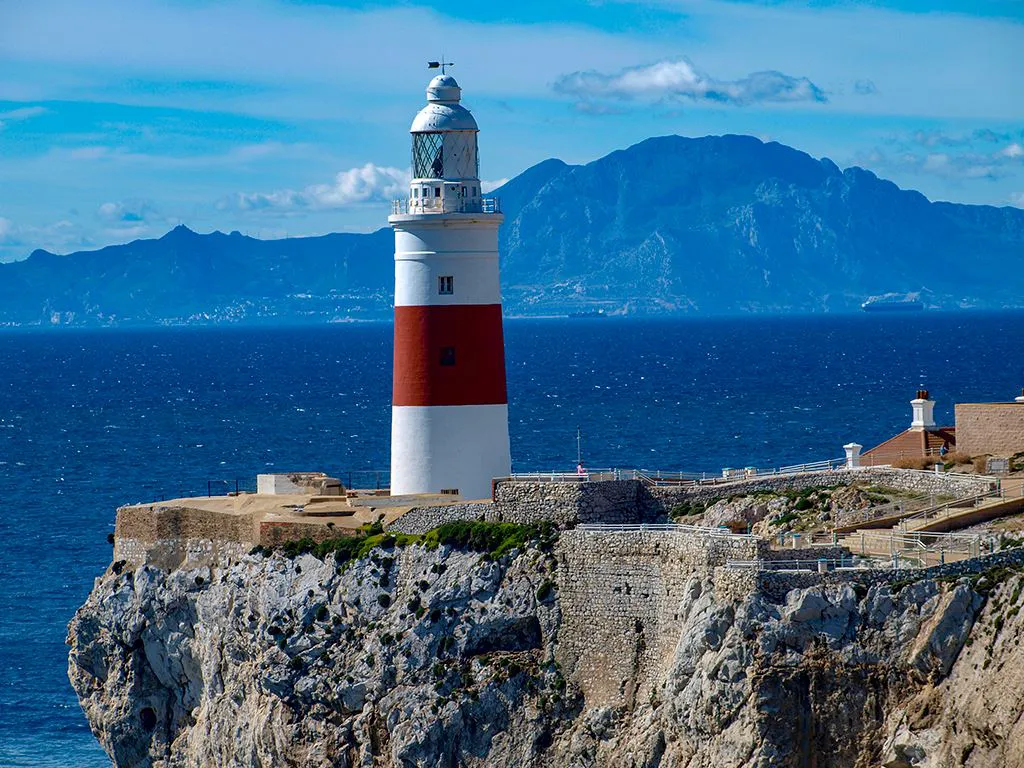
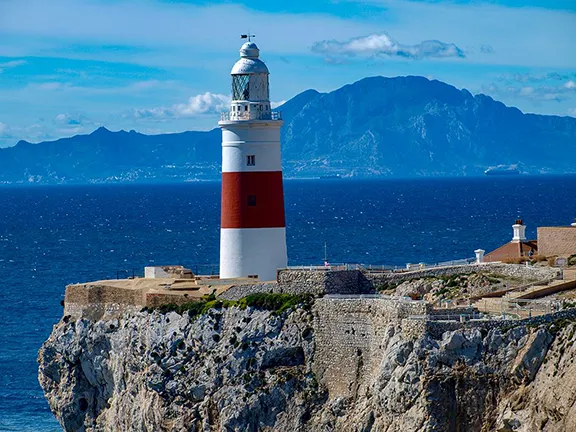
Pillars of Hercules north to south
The legend of the Pillars of Hercules has fascinated people for thousands of years.
Guarding the entrance to the Atlantic Ocean to the north and south are two mountains. The Rock of Gibraltar at 426 metres to the north and the much higher Jebel Musa at 851 metres in Morocco to the south - together they are known as the Pillars of Hercules.
At this point, the Straits of Gibraltar are just 14 kilometres wide and, even today, a dangerous place to be due to the strong currents. The Atlantic Ocean is one metre higher than the Mediterranean due to the Mediterranean evaporating faster than it can be refilled from rivers. There is a constant stream of water from west to east as the Atlantic tries to top up the Mediterranean. That is why, on the Spanish side of the Mediterranean, the sea feels cool even in the summer as far up the coast as Marbella where the cold Atlantic waters start to disperse south into the bulk of the Mediterranean Sea.
Navigators must also cope with the tidal streams that flow west to east and east to west and the wind that, for the majority of the year is funnelled between the land masses and blows west to east, a wind that is known as the Poniente, or east to west, the Levante. Just west of Gibraltar is Tarifa, reputed to be the windiest place in Europe.
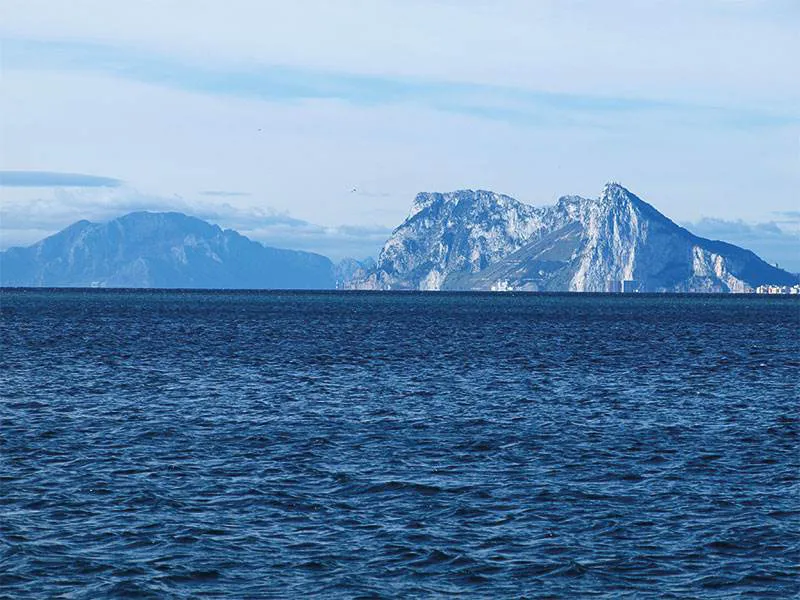
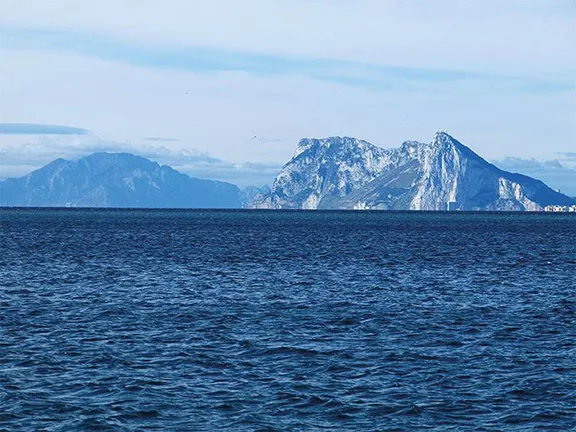
Pillars of Hercules from the east - Jebel Musa left Gibraltar right
Nobody knows who invented the first boat, or where it was invented. Circumstantial evidence indicates the Australian aborigines crossed from Bali to Lombok about 50,000 years ago but the oldest proper boat, a log canoe, was found in Holland. It is dated to about 8000 BC. A craft of this nature, however, would not have been very safe on the Mediterranean Sea.
A 7000-year-old seagoing boat made from reeds and tar has been found at Kuwait and was probably paddled in the coastal waters of the Persian Gulf. The Mesopotamians and Egyptians started to experiment with sails about 3000 BC and rapidly developed seagoing vessels the designs of which were copied by the Sumerians, Assyrians, Babylonians, Phoenicians, Persians and Greeks.
Certainly, by 2500 BC, the Phoenicians were using seagoing vessels with keels and sails to trade between Egypt and the civilisations at the eastern end of the Mediterranean. Over the next thousand years, they expanded their trading area throughout the Mediterranean as far as the Gibraltar Strait. There they were confronted by the Straits.
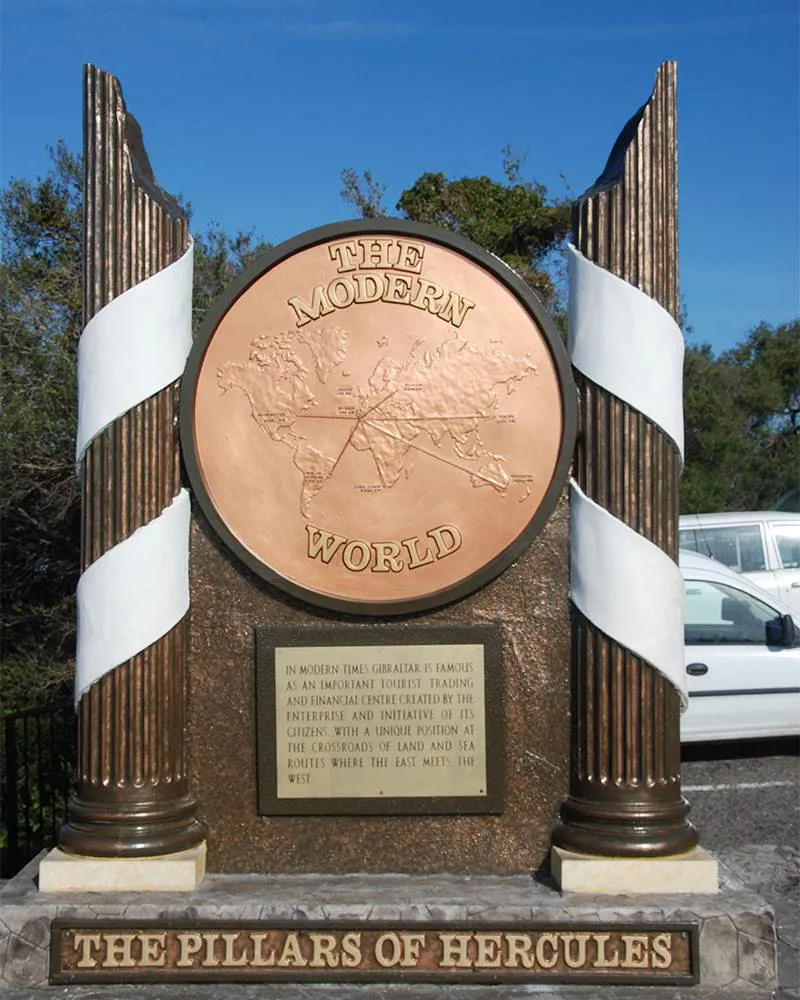
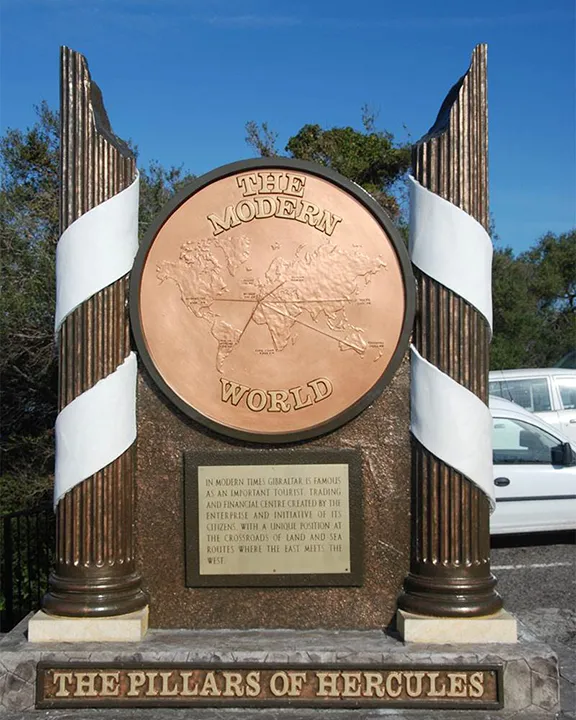
New Pillars in Gibraltar car park
Stories of the horrific seas, fiendish weather and devilish serpents, probably the concentration of whales to be found in the Straits, were brought back to the east by these early maritime explorers who actually managed to pass through the Straits to establish trading posts at Gades (Cádiz) about 850 BC and further north along the Atlantic coast of Portugal.
The tales were an unmistakable warning to rival traders not to pass through the Strait and interrupt their trade with the Tartessians in Spain and the Celts in Portugal.
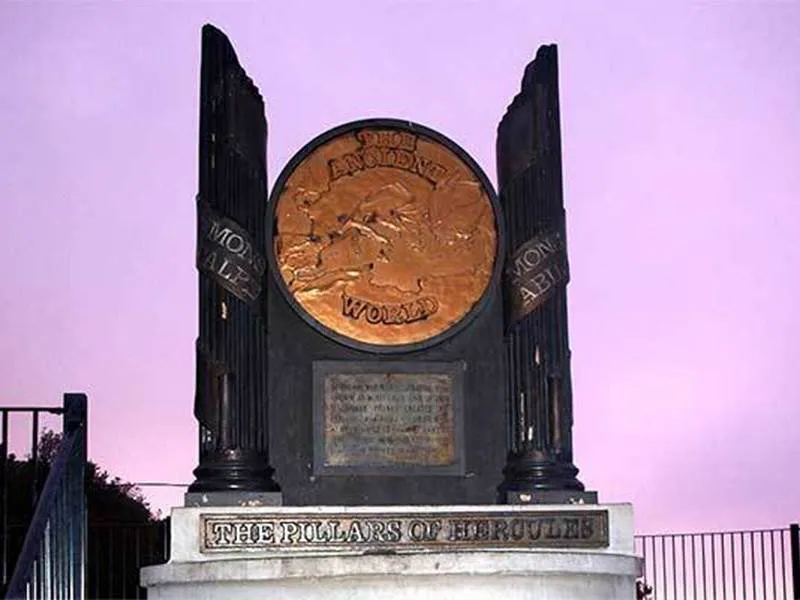
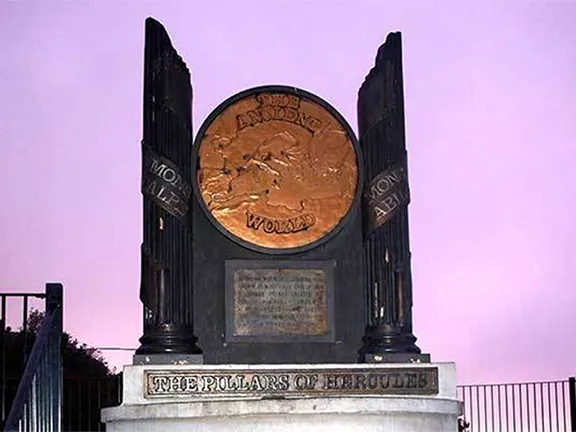
Old Pillars on plinth at Jews Gate
Around 600 BC, an ancient Greek poet called Peisander wrote of the twelve labours of the Greek mythical hero Hercules.
The tenth task was to steal the cattle of the giant Geryon who lived on an island called Erytheia in the mythical Hesperides in the far west of the Mediterranean. The more literal Greeks interpreted Hesperides as being the land of the Tartessos in the area of present-day Huelva and Cádiz.
Another Greek poet, one hundred years after Peisander, called the westernmost point of Hercules’ journey, ‘the gates of Gades’, probably a reference to the Phoenician trading post at present-day Cádiz.
The tales initiated a cult following. Young men set off to emulate Hercules and, incidentally, become competitors for the trade west of the Straits, probably the desired result of the author, nothing if not canny those Greeks.
It was not until the Greek philosopher Plato wrote of Atlantis around 400 BC that the term ‘Pillars of Hercules’ was first mentioned. He placed Atlantis to the west of the pillars, but even so their exact geographical position had not been precisely determined.
Along came the Romans. They adapted the original Greek poem by Peisander and the pillars become fixed.
According to Roman mythology, during his journey, Hercules had to cross the Atlas Mountains. Rather than climb them, Hercules stamped his foot creating the Straits and a channel between the Mediterranean and the Atlantic. They then fixed the two pillars as Calpe (Gibraltar) and Mons Abila (present-day Monte Hacho, a rather insignificant hill overlooking Ceuta).
Later scholars decided that the much more imposing Jebel Musa was more likely to be the southern pillar.
The argument on which is the southern pillar of Hercules continues to this day.
Whether the question will ever be decided is a matter for conjecture. However, the history of the pillars continues.
In 2018, the monumental sculpture representing the northernmost pillar, set on a plinth at Jew’s Gate on Gibraltar, was moved sideways about 20 metres, off the plinth and into the car park alongside.
The monument was moved because its weight had been causing the ceiling of the public conveniences below the plinth to crack and was threatening to fall through the roof – not a problem the Phoenicians would have had to consider.
You won't miss the beautiful sight of the Pillars of Hercules as you approach Gibraltar! Once you're in Gibraltar itself, you can head to the Gibraltar Natural Reserve to get to the Pillars of Hercules where you can enjoy panoramic views of the city below and the sea beyond. It's definitely a must-see site.
If you're visiting Gibraltar on a day trip, the best way to maximise your time and see the highlights is to take a guided tour. Check out the most popular tours below (and yes, they include a visit to the Pillars of Hercules).
Travelling to/around Spain and need some help? Here are our favourite travel resources.
We usually use Booking.com to look for hotels or apartment rentals. Lots of choice & you can unlock more discounts with their Genius loyalty programme!
To research transportation options around Spain, we like using Omio. It’s an easy way to compare different modes of transport and prices in one place.
For last-minute holiday deals, check out Expedia UK.
Looking for things to do? Viator has a huge catalog of activities and tours across many cities in Spain. We also love Get Your Guide!
Guruwalk is our favourite platform to find the best free walking tours in a city.
For money transfers or spending overseas in foreign currency, Wise is our favorite borderless banking service.
Travel insurance is a must to protect against emergencies and unexpected incidents. Get a quote from SafetyWing here.